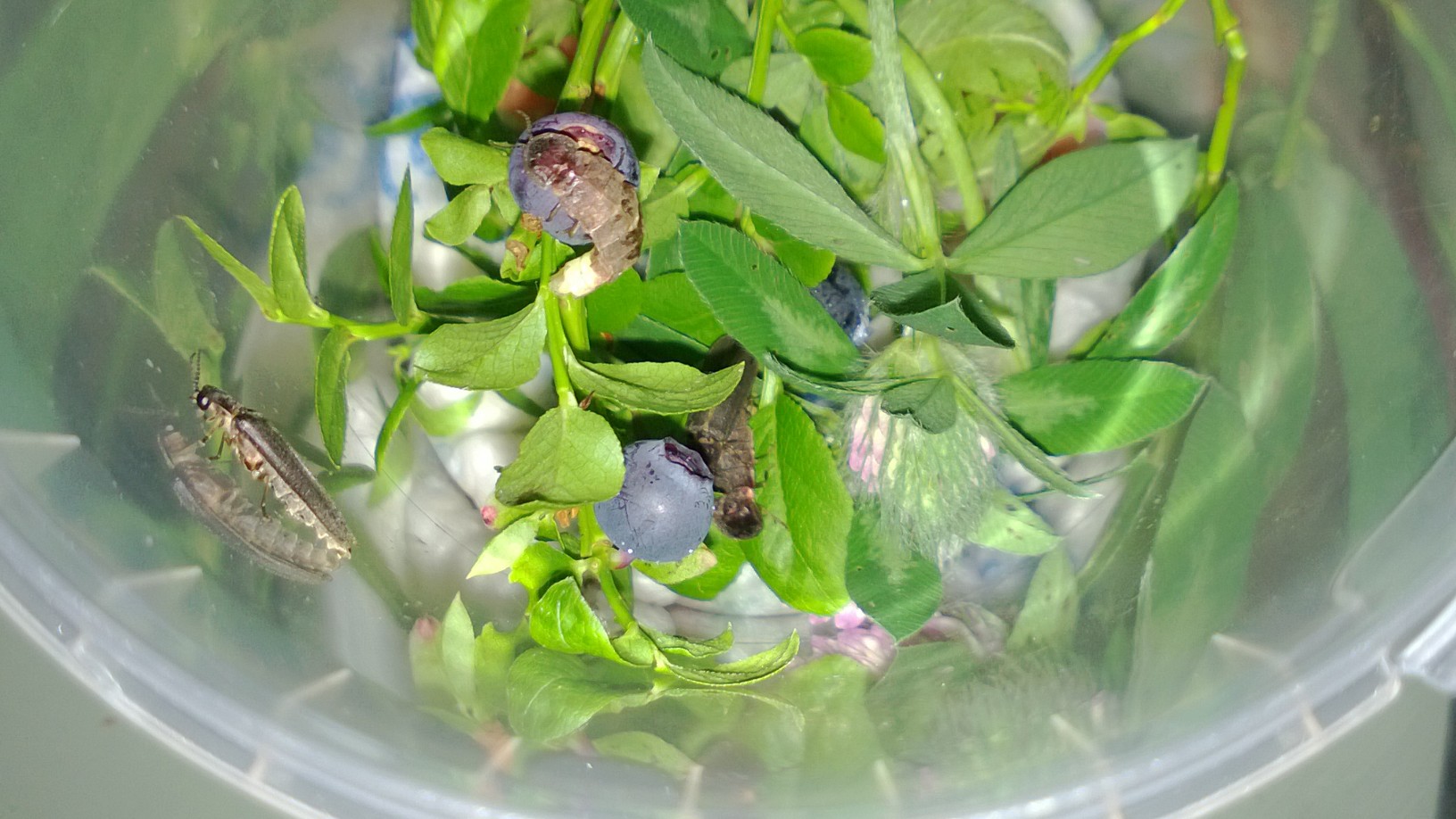European Glow Worm: short review
The European Glow-Worm (Lampyris noctiluca), is the more common of the two species of glow-worm found in Finland, and of the approximately 70 species in Europe. It can be found across all Europe (except Ireland) and Russia. Unlike its name suggests, the European glow-worm is not a worm, but a beetle from the Lampyridae family (Elateroidea). The adults are active at night, from May to late September, but mostly in July.

Male glow worm on the left, female on the blue berry and mating couple under the leaves
Glow-worms are Elateroidea beetles, but the sexes look different. The males look like typical beetles with elongated wing cases and a pronotum (shield) covering the head and protecting the large eyes. The females are wingless and much larger than the males. They glow brightly at night. The light creating organ is called the lantern. When not glowing, the lantern can be seen as a white area on the underside of the body.
Glow-worm larva
The larva, while very similar to the female, but can be distinguished from adult females by:
1. The edges of the upper body segments have orange spots that females don't have.
2. The head of the larva can be retracted into the body and is small with a distinctive white neck.
3. The larvae can also glow, but only with two small glowing spots that are much fainter than the females lantern. Larvae glow mainly when disturbed to warn potential predators about their inedibility, a phenomenon called aposematism.
The development from larva to adult takes one to three years in nature, but can be five to six months in captivity. During this period, the larvae feed mainly on snails and other soft-bodied invertebrates. The lifespan of the adults is 10 to 15 days.

Light is created through a process of bioluminescence. An enzyme, called luciferase, acts on a substrate, luciferin, in presence of oxygen and ATP, which form oxyluciferin, an unstable molecule that emits light when decaying. This reaction is also known for its efficiency: 98% of the energy is turned into light and the remaining 2% is turned into heat. In comparison, a light bulb can reach 3% efficiency.
In Finland glow-worms are found in the Southern and central parts of the country. They are mainly found in calcareous areas with a large amount of snails. Exact distribution is here.